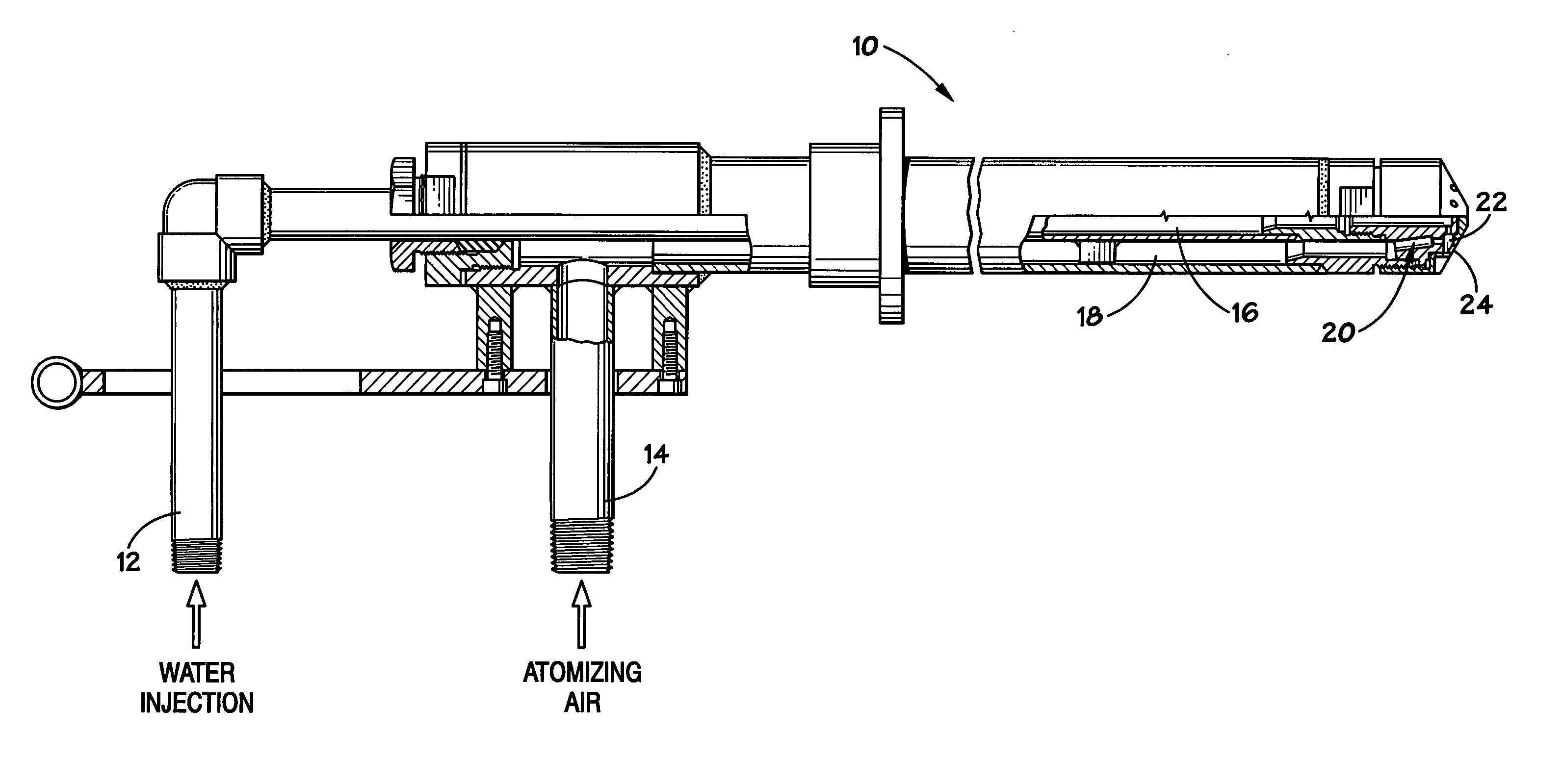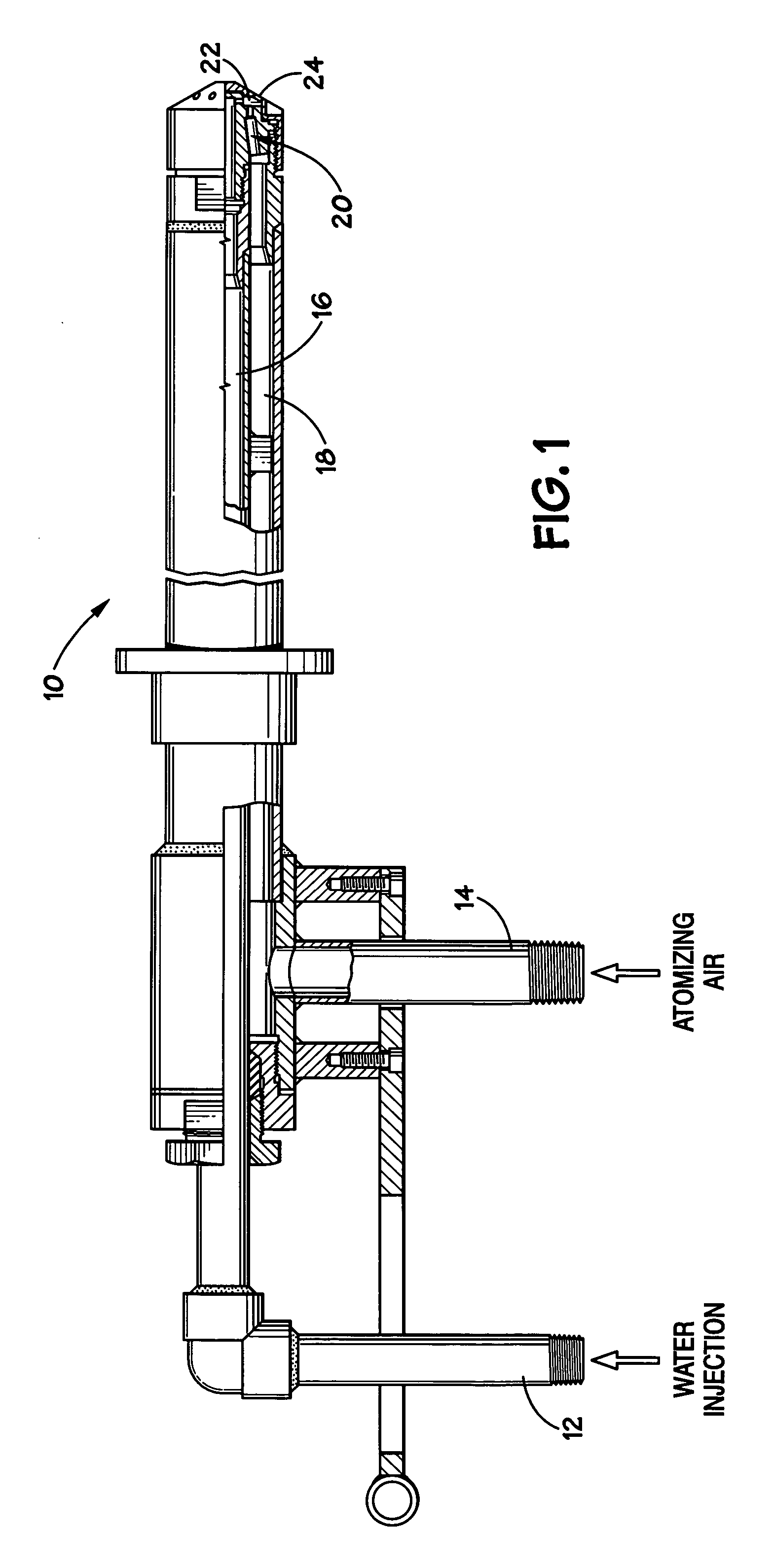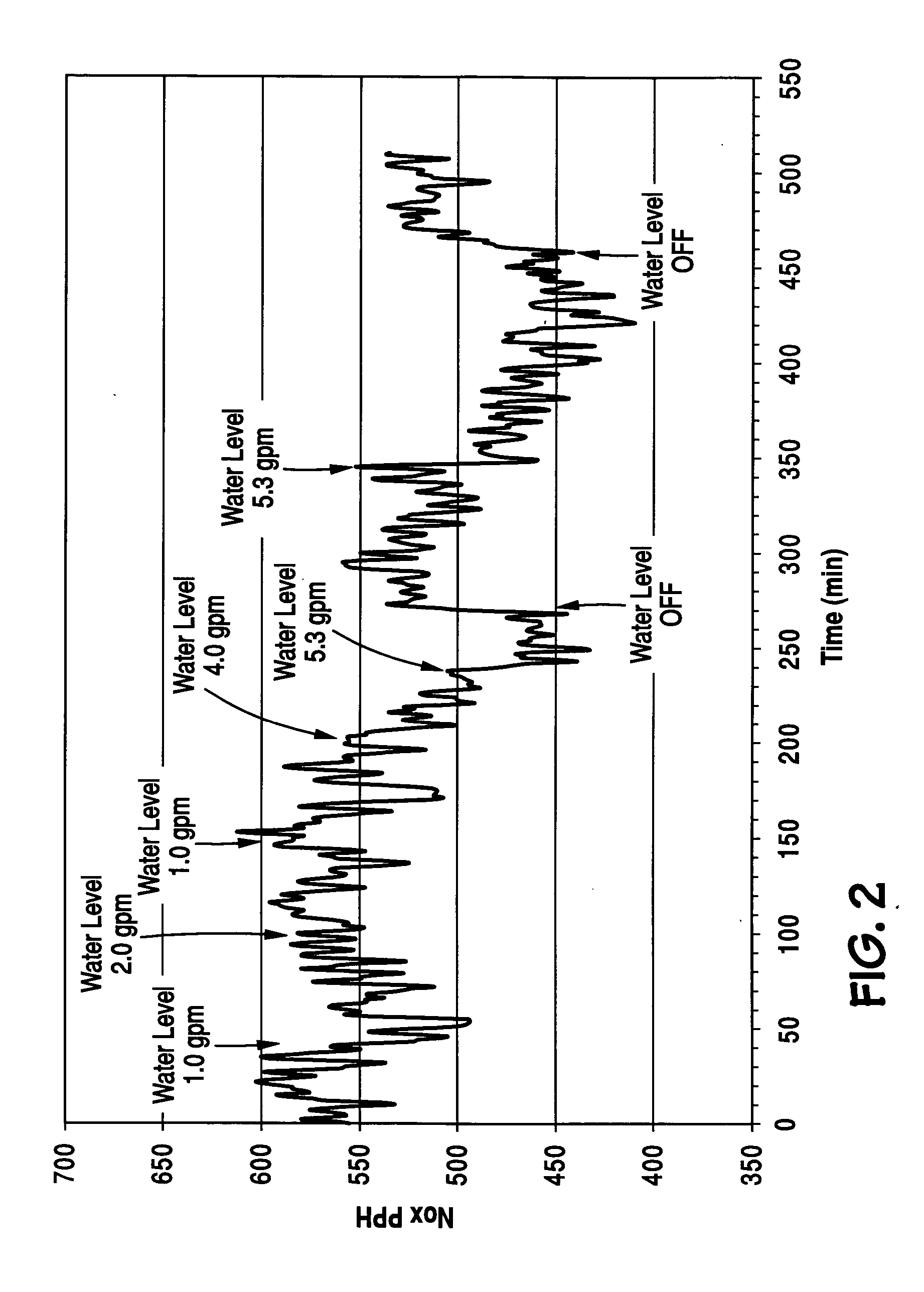Method of reducing cement kiln NOx emissions by water injection
- Summary
- Abstract
- Description
- Claims
- Application Information
AI Technical Summary
Benefits of technology
Problems solved by technology
Method used
Image
Examples
example 1
[0032] An existing cement kiln operates at 9.5 tons per hour and employs a burner that includes an internal oil lance, permitting direct injection and air atomization of water into the flame. Water was injected into the flame at rates of up to 5.3 gallons per minute (i.e. about 14 weight % water), and the effect on NOx emissions was observed. The results are depicted in FIGS. 2 and 3. With reference to FIG. 2, little effect was noted at water flow rates of 1-2 gpm, although rapid and dramatic reductions in NOx emissions were observed at 4-5.3 gpm. The maximum effect was observed after only a few minutes of water injection. An increase in NOx emissions was also observed when water injection was discontinued (Water Level Off in FIG. 2). FIG. 3 depicts the 10-20% reduction in NOx emissions observed in a series of transitions from no water injection to 5.3 gallons per minute of water injection.
example 2
[0033] A test was conducted to explore the use of petroleum coke as burner fuel for a cement kiln. It had previously been believed that this material could not be used without exceeding NOx emission standards. In a portion of the test, water was injected into the burner via the fuel oil lance at up to 8.5 gallons per minute, which reduced thermal NOx emissions by up to 50%. The use of water injection controlled NOx emissions successfully when coke made up 40 weight % (balance coal) of the burner fuel.
PUM
 Login to View More
Login to View More Abstract
Description
Claims
Application Information
 Login to View More
Login to View More - R&D
- Intellectual Property
- Life Sciences
- Materials
- Tech Scout
- Unparalleled Data Quality
- Higher Quality Content
- 60% Fewer Hallucinations
Browse by: Latest US Patents, China's latest patents, Technical Efficacy Thesaurus, Application Domain, Technology Topic, Popular Technical Reports.
© 2025 PatSnap. All rights reserved.Legal|Privacy policy|Modern Slavery Act Transparency Statement|Sitemap|About US| Contact US: help@patsnap.com



